The Suicide Caves Beneath St. Louis
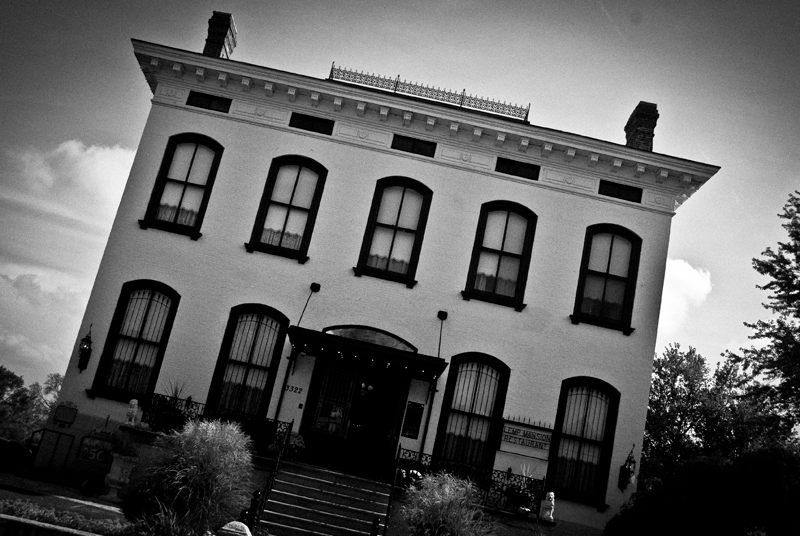 The entrance of the Lemp Mansion (photograph by Scott Neale)
The entrance of the Lemp Mansion (photograph by Scott Neale)
St. Louis, Missouri, has always been a beer town. There, 1854 was known as “the year the beer ran out” because the city’s residents simply drank it all. But in the days before Anheuser-Busch was king, another brewery, now decaying in the shadows of the 140-acre Busch complex, was synonymous with St. Louis lager: Lemp. Their name, affixed to the top of their highest tower, still looms above windowless grain silos and casts a pall over the red brick warehouses surrounding them.
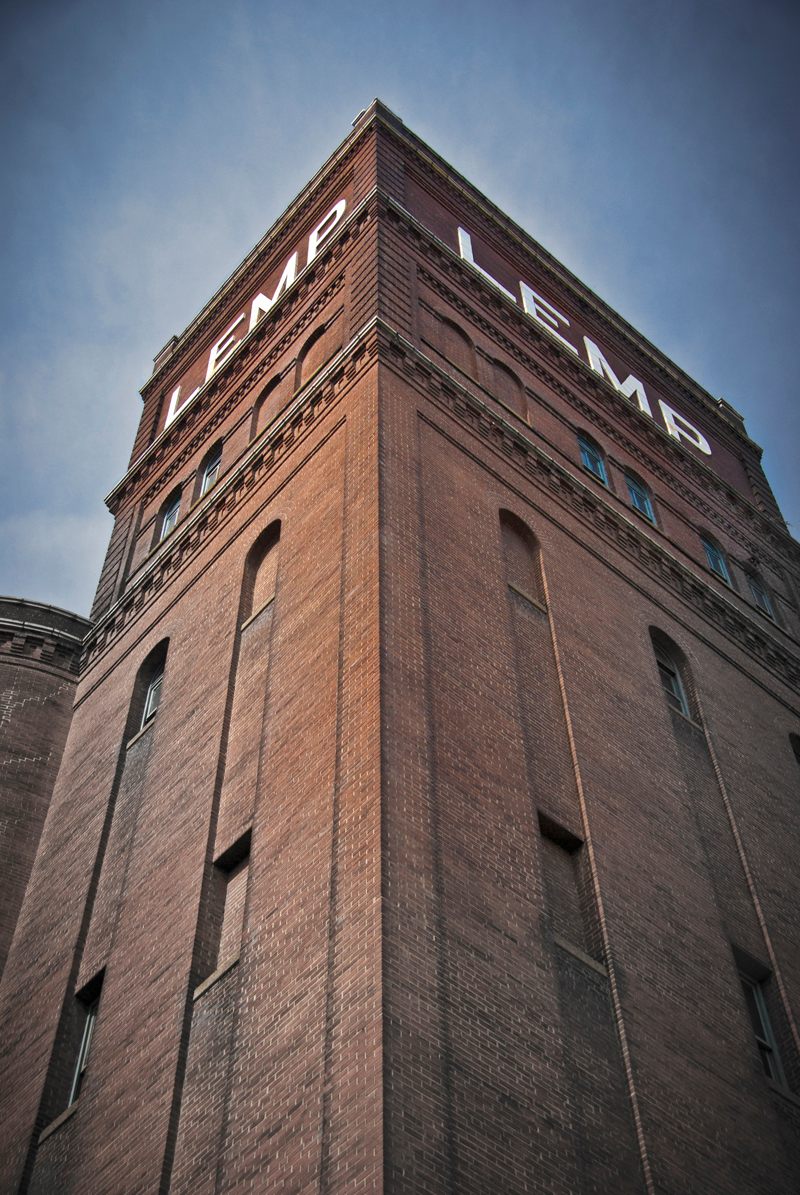 The Lemp brewery tower (photograph by Scott Neale)
The Lemp brewery tower (photograph by Scott Neale)
For a place to feel as dead as the Lemp brewery does, it has to feel alive first. After William Lemp moved his father’s brewery to this site in 1864, the complex was as lively as Sir John Falstaff, the namesake of Lemp’s most popular beer. William and his wife Julia built a brick mansion near the brewery where they lived with their eight children: Anna, Billy, Louis, Charles, Fredrick, Hilda, Edwin and Elsa.
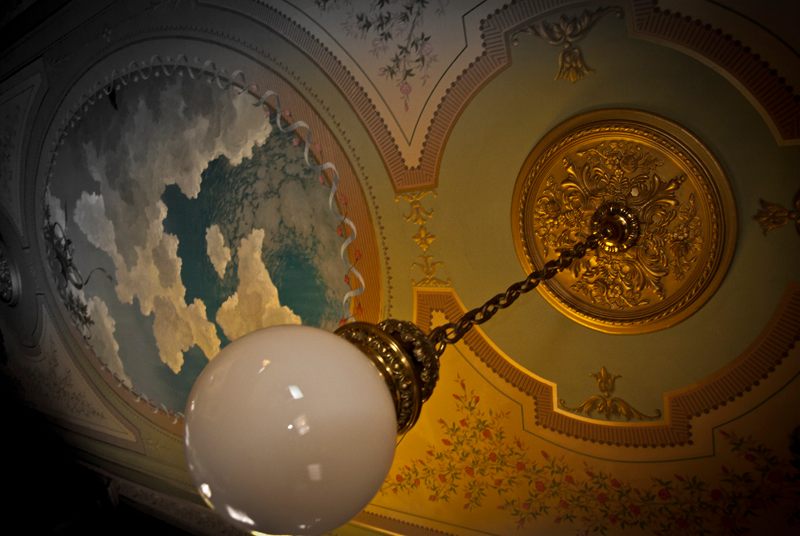 The ceiling in the front parlor of the mansion (photograph by Scott Neale)
The ceiling in the front parlor of the mansion (photograph by Scott Neale)
The new brewery complex was situated on top of natural caves that were perfect for storing ice and aging beer. William took full advantage of the underground space and even made tunnels that connected the house to the brewery. But something snapped in him when his favorite son Frederick died of heart failure at 28.
William had the largest mausoleum in Bellefontaine Cemetery built for him, as if he knew his family would need such a monument sooner rather than later. From then on William seemed to sink into the caves under the house. Eventually he avoided the outside world entirely and walked to work and back home through the dark tunnels. In 1904, a month after his close friend and fellow brewer Frederick Pabst died, he excused himself from the breakfast table at Lemp mansion, returned to his bedroom, and shot himself in the head.
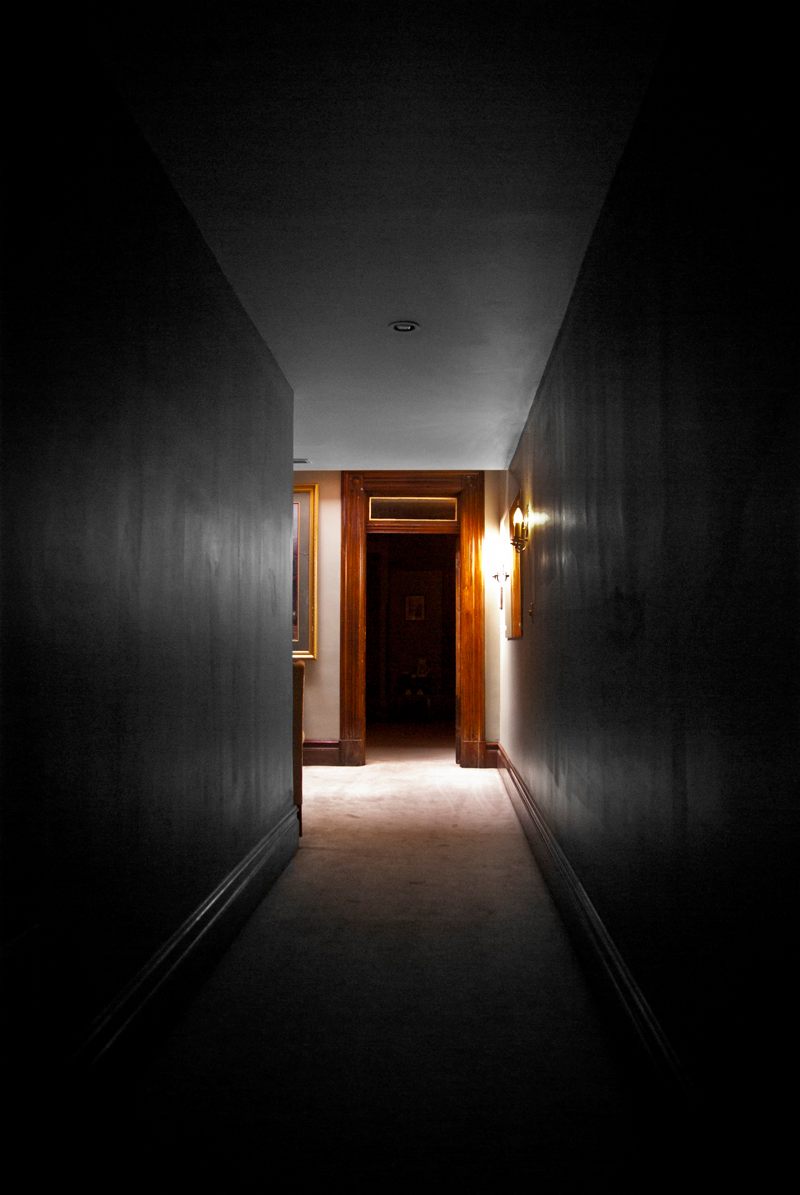 The interior of Lemp Mansion (photograph by Scott Neale)
The interior of Lemp Mansion (photograph by Scott Neale)
William’s oldest son Billy immediately took over the brewery with his vivacious society wife, Lillian — “The Lavender Lady” — a spoiled St. Louis debutante with a lavender horse-drawn carriage for every day of the week and an endless supply of custom-made lavender dresses to match. Unlike his father, Billy never cared about the business of brewing beer so much as he cared about the lifestyle it afforded him. When refrigerators replaced the lager caves, he turned the caves into an underground swimming pool and private theatre. There he held underground parties that turned into lurid, booze-fueled debauches until Lillian divorced him in a nasty public trial.
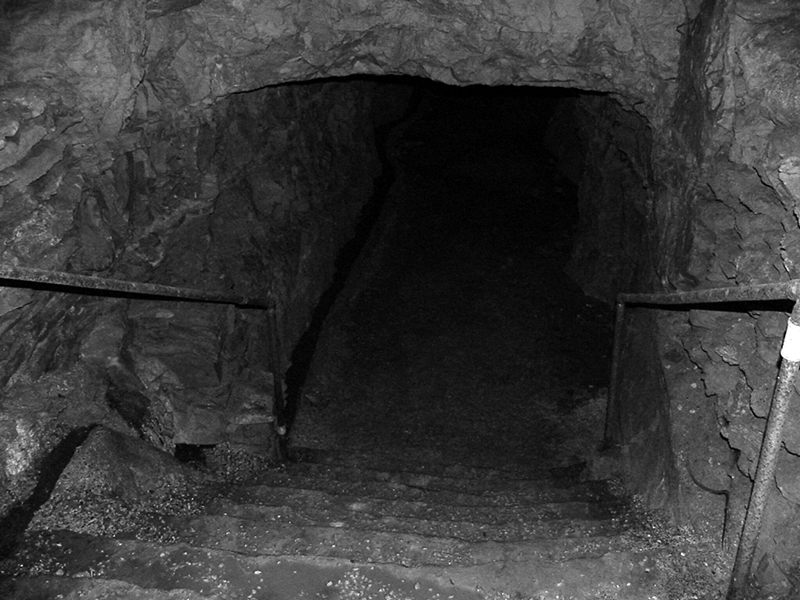 The entrance to the caves from the sub-basement (photograph by Scott Neale)
The entrance to the caves from the sub-basement (photograph by Scott Neale)
While Billy’s proclivities for pistols and prostitutes were trotted out in divorce court, the youngest Lemp, Elsa, was also suffering through a rocky marriage. Though it didn’t make the papers, her neighbors were still well aware of her and her husband’s problems thanks to the screams and crashes coming from their house. When she was found shot in her bed one morning in 1920, her husband was quick to call it a suicide just like her father’s, despite her friends’ belief that she was never so melancholy. Still when Billy heard the news he only said, “Well that’s the Lemp family for you.”
 The abandoned brewery (photograph by Scott Neale)
The abandoned brewery (photograph by Scott Neale)
Did Billy feel it in himself then? Was that a comment on Elsa’s state of mind or his own? It was no surprise that prohibition caught the Lemps off guard under Billy’s leadership that same year. They tried to scrape together alternate business plans until Billy abruptly closed the building and auctioned the brewery off for eight cents on the dollar. Two years later Billy excused himself from the breakfast table at Lemp mansion, went into his office, and shot himself in the chest.
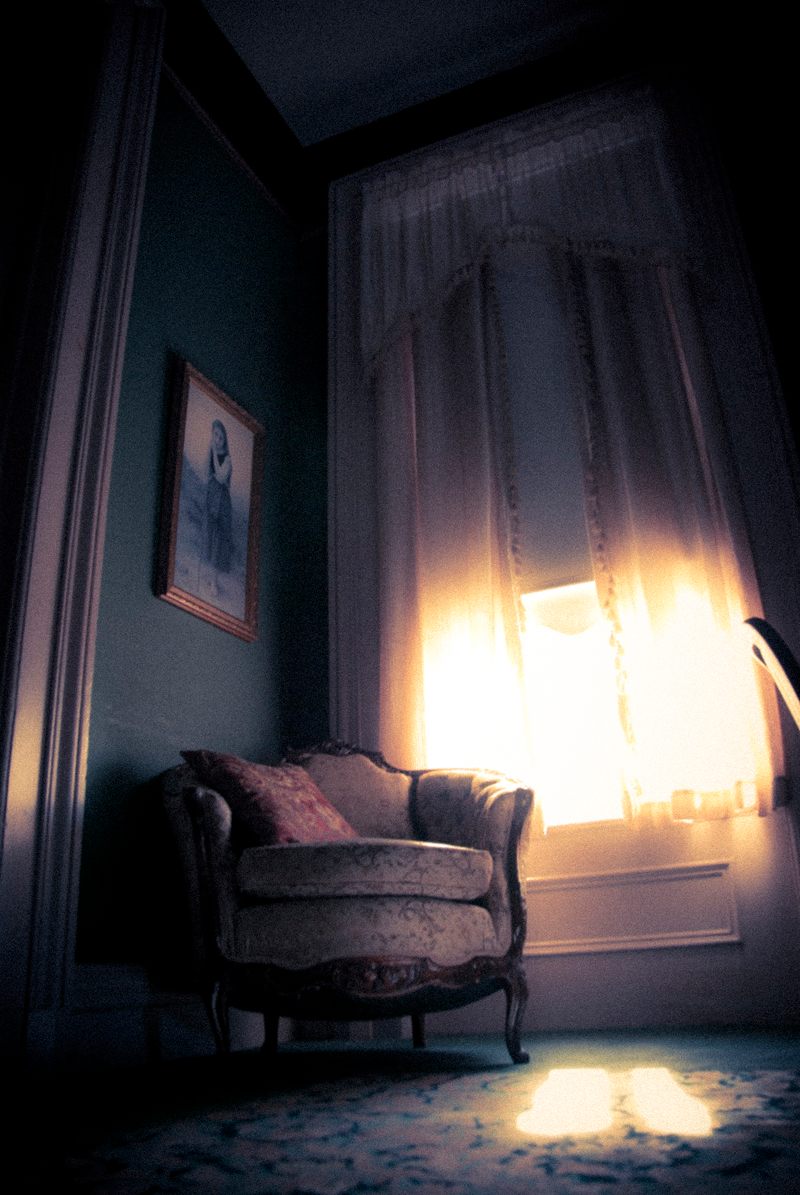 The William Lemp Suite (photograph by Scott Neale)
The William Lemp Suite (photograph by Scott Neale)
In 1929, Charles moved back into Lemp mansion. He lived there with the last two remaining servants while his eccentricities morphed into a severe form of obsessive-compulsive disorder. By 1949 he was a complete recluse. One of the servants found him in his bed with a self-inflicted bullet wound to the head.
Of all the Lemp children, Edwin lived the longest. He and Billy had discovered their father’s body and rushed to their sister’s house when she killed herself. He had shown up to make arrangements when Billy shot himself and overseen Charles’ strange request to be cremated and buried in secret. It had taken a toll on him and in his old age he grew terrified of ever being alone. He hired a caretaker to stay with him at all times. When he died in 1970, his final wish was for his caretaker to burn every piece of art in his house and all the Lemp family papers and heirlooms. The caretaker obliged and much of the Lemp family history was lost forever in the fire.
 Cave spring water in the basement (photograph by Scott Neale)
Cave spring water in the basement (photograph by Scott Neale)
Today, the brewery basement is transformed every Halloween to a haunted maze that does everything just shy of promising real ghosts and a taste of the Lemp’s madness. Beyond the basement, the caves go so deep that eyeless cave fish swim through the pool and a match will sputter out as soon as it’s struck. Above, the Lemp mansion is a bed and breakfast that trades on rumors that the unhappy family still haunts the halls at night. Occasionally paranormal investigators show up with dubious devices and tests, certain they can make contact with the Lemps.
Though there was only one terse suicide note between the four of them, the ghost hunters hold out hope that William, Billy, Elsa, Charles, and an assortment of other wholly invented characters might still talk. Their silence, after all, is scarier than any specter; we can only look back and see four people silently following each other into the family mausoleum, consumed by an unspeakable urge to die.
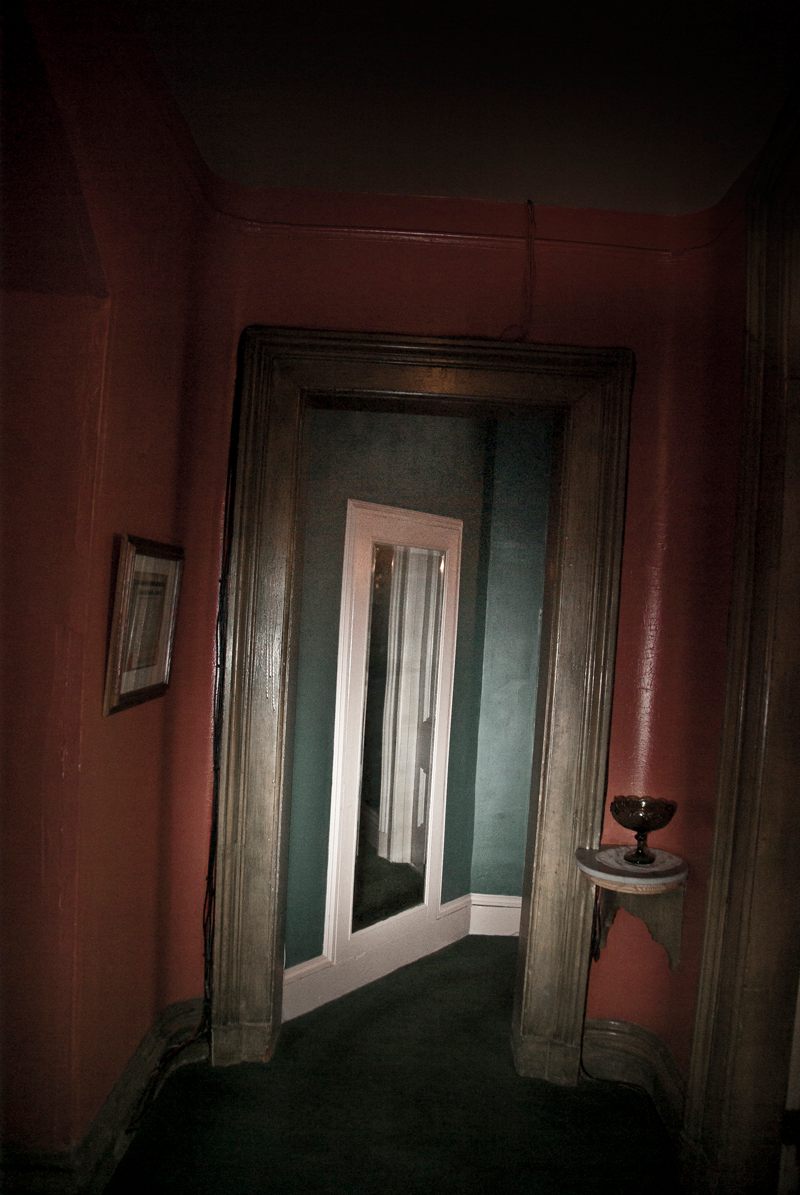 The interior of Lemp Mansion (photograph by Scott Neale)
The interior of Lemp Mansion (photograph by Scott Neale)
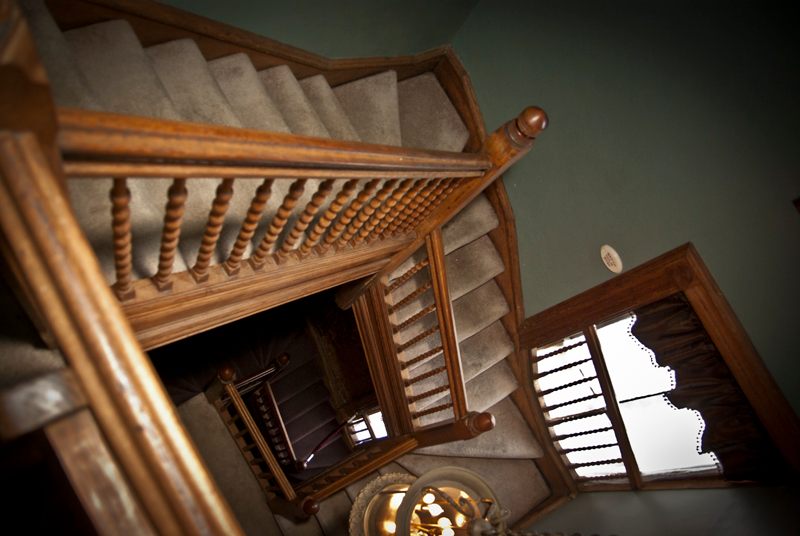 The back staircase at Lemp Mansion (photograph by Scott Neale)
The back staircase at Lemp Mansion (photograph by Scott Neale)
Sources:
Missouri’s Wicked Route 66: Gangsters and Outlaws on the Mother Road by Lisa Livingston-Martin
Movers and Shakers, Scalawags and Suffragettes: Tales from Bellefontaine Cemetery by Carol Ferring Shepley
Suicides and Spirits: The True Story of the Rise and Fall of the Lemp Empire by Troy Taylor
All this month we’re celebrating 31 Days of Halloween with real tales of the macabre and strange. For even more, check out our spooky stories from 2011 and 2013.














Follow us on Twitter to get the latest on the world's hidden wonders.
Like us on Facebook to get the latest on the world's hidden wonders.
Follow us on Twitter Like us on Facebook